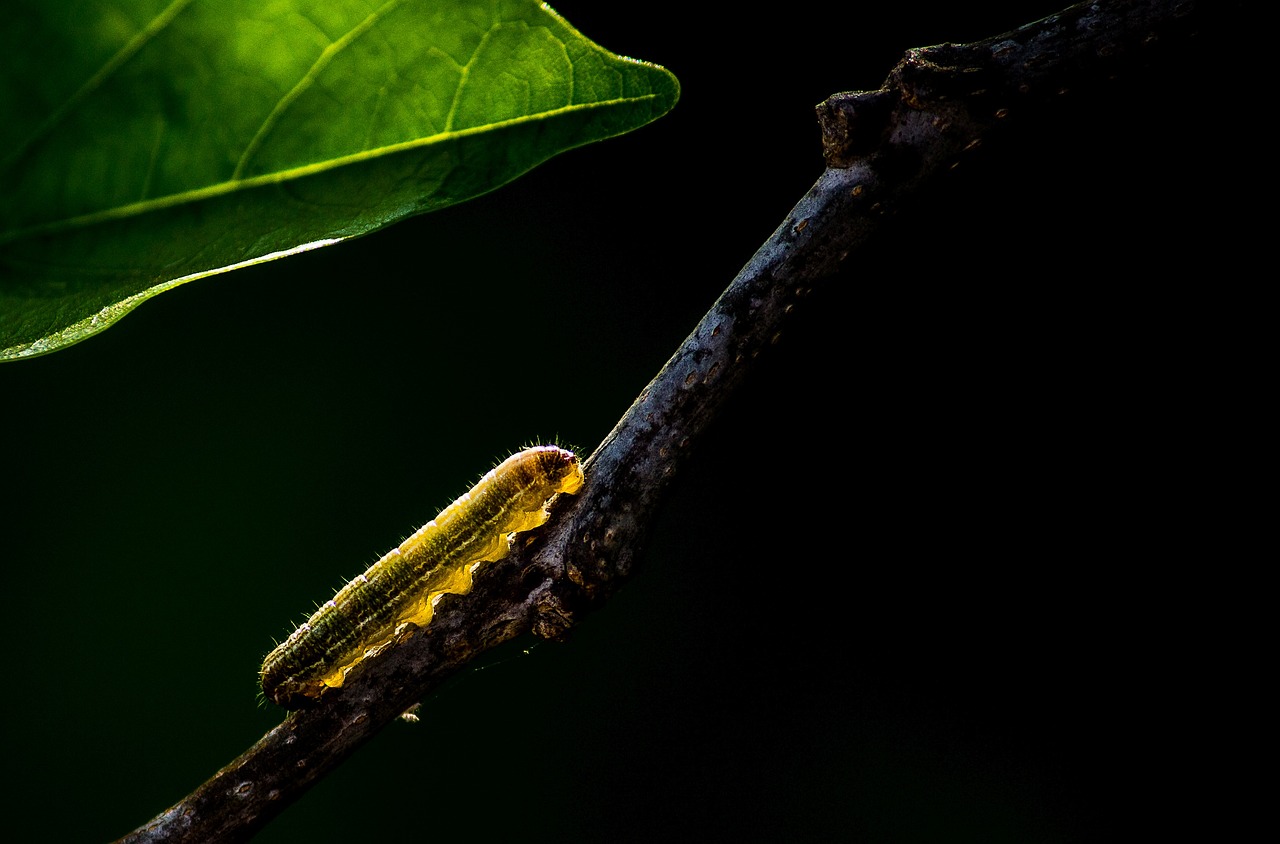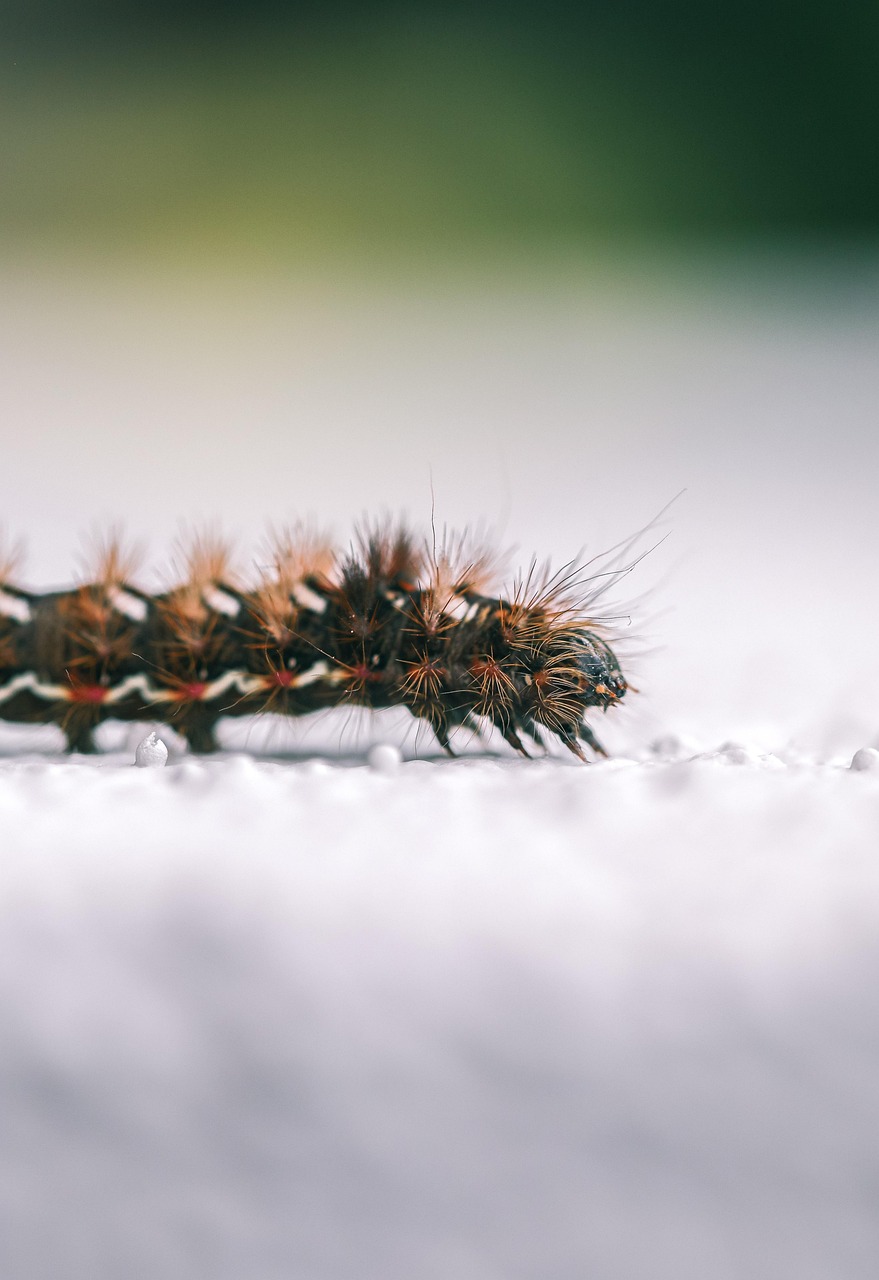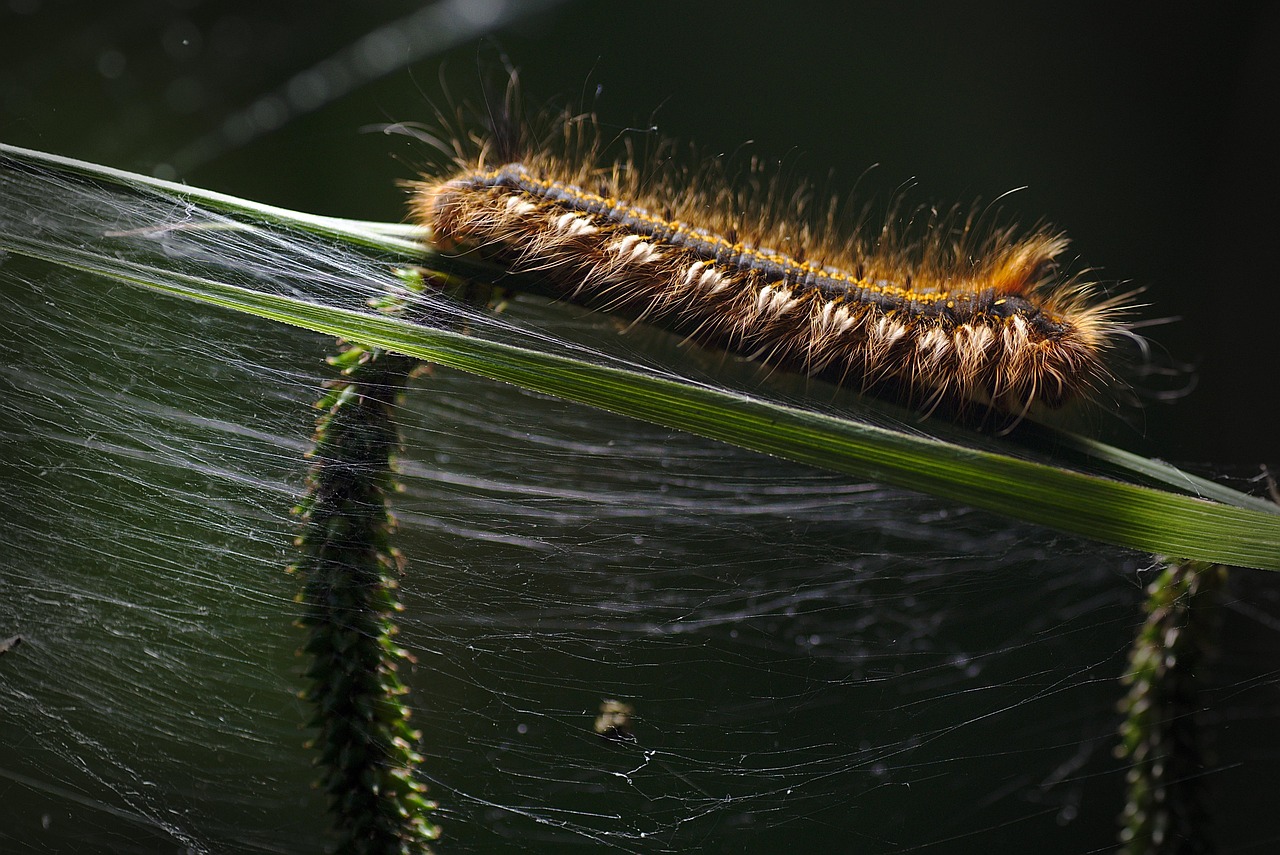Black caterpillars are intriguing creatures that captivate both nature enthusiasts and casual observers alike. Their sleek appearance, combined with their mysterious lifestyles, often raises questions about their role in the ecosystem and potential dangers they may pose.
Caterpillars, in general, are the larval stage of butterflies and moths. They are known for their voracious appetites and rapid growth. While many caterpillars are harmless, some species that display dark coloration can be warning signs of toxicity or mimicry, serving as a defense mechanism against predators.

The black color of these caterpillars can serve various purposes. It may help absorb heat from sunlight, enabling them to maintain optimal body temperatures. Additionally, dark colors can act as camouflage against predators in certain habitats. However, it can also indicate that the caterpillar may possess toxins to deter potential threats.
Understanding Black Caterpillars
There are numerous species of black caterpillars inhabiting diverse ecosystems around the world. Some of the most notable include:
- Black Swallowtail Caterpillar: Known for its striking color changes as it matures, this caterpillar is a common sight in gardens.
- Hickory Horned Devil: One of the largest caterpillars, it is known for its impressive size and formidable appearance.
- Spotted Tussock Moth Caterpillar: This caterpillar is not only black but also features distinctive tufts of hair, making it quite unique.
Each of these species has its own distinct characteristics and behaviors. Some may be more dangerous due to their venomous spines or toxins, while others are harmless and play a crucial role in their respective ecosystems.
Black Caterpillar Facts
| Species | Coloration | Potential Danger | Habitat |
|---|---|---|---|
| Black Swallowtail | Black with yellow and green markings | Generally harmless | Gardens, meadows |
| Hickory Horned Devil | Dark green to black | Harmless but intimidating | Forests with hickory trees |
| Spotted Tussock Moth | Black with tufts of yellow and blue | Can cause skin irritation | Woodlands, shrubs |
The role of black caterpillars in the food chain is significant. As herbivores, they help control plant populations. Additionally, they serve as vital prey for birds and other predators. This balance in nature highlights the importance of understanding these creatures beyond their appearance.
When observing black caterpillars, it is essential to approach them with caution. Some species can cause skin irritation, while others may be more toxic if ingested. This makes it crucial for individuals, especially children, to learn about the differences between harmless and potentially dangerous varieties.
In summary, black caterpillars embody a blend of beauty and mystery. Their sleek forms and varying behaviors contribute to the rich tapestry of life in ecosystems around the world. By understanding these fascinating creatures better, we can appreciate their role in nature even more.
Identifying Black Caterpillars

Identifying black caterpillars can be a rewarding experience for nature enthusiasts and casual observers alike. Understanding their features, behaviors, and habitats will enhance your ability to recognize various species. Here are some key characteristics to look for when identifying black caterpillars:
- Coloration: While many black caterpillars are predominantly dark, they often exhibit variations in shade or may have distinct markings, such as stripes or spots.
- Body Structure: Observe the shape and texture of the caterpillar’s body. Some may be smooth, while others possess spines or bristles that can indicate potential danger.
- Size: Caterpillar sizes can vary significantly. Knowing the average size of different species can aid in identification.
- Behavior: Pay attention to how the caterpillar moves. Some may be more active during the day, while others are nocturnal.
Common Habitats of Black Caterpillars

Black caterpillars can be found in various habitats, each supporting different species. Understanding where these creatures thrive is essential for observation and study.
- Forests: Many black caterpillars live in wooded areas where they feed on the leaves of trees.
- Gardens: Commonly seen in gardens, they often feed on a variety of ornamental plants and vegetables.
- Grasslands: Some species inhabit open fields and meadows, where they can camouflage among grasses and wildflowers.
- Shrublands: Areas with dense shrubs provide excellent hiding spots for black caterpillars, making them less visible to predators.
The Lifecycle of Black Caterpillars
The lifecycle of black caterpillars involves several stages, each crucial for their development. Understanding this lifecycle provides insight into their behavior and ecological roles.
- Egg Stage: The lifecycle begins when female moths or butterflies lay eggs on suitable host plants.
- Lava Stage: Once the eggs hatch, the caterpillars emerge and enter the larval stage, characterized by rapid growth and feeding.
- Pupal Stage: After reaching a certain size, caterpillars will form a chrysalis or pupa. This stage is critical for transformation into adult moths or butterflies.
- Adult Stage: Finally, they emerge from the pupa as adults, ready to reproduce and continue the cycle.
Each stage of this lifecycle is vital for the survival of black caterpillars. The larval stage is particularly significant as it involves intense feeding, which prepares them for their transformation into adults. Their ability to adapt to various environments during this stage contributes to their survival rates.
The Role of Black Caterpillars in Ecosystems
Black caterpillars play essential roles in their ecosystems beyond simply being herbivores. They contribute to ecological balance in multiple ways:
- Food Source: They serve as a significant food source for numerous predators, including birds, insects, and small mammals.
- Pollination: Adult butterflies and moths often engage in pollination, aiding plant reproduction and biodiversity.
- Soil Health: Their droppings contribute organic matter to the soil, enhancing its fertility and supporting plant growth.
The intricate relationships between black caterpillars and other organisms highlight their importance in maintaining healthy ecosystems. Understanding these connections fosters greater appreciation for these often-overlooked creatures.
Potential Dangers of Black Caterpillars
While many black caterpillars are harmless and play crucial roles in the environment, some species can pose dangers to humans and animals. Understanding which black caterpillars may be harmful is essential for safety and awareness.

Identifying Toxic Species
Some black caterpillars possess toxins or stinging hairs that can cause irritation or allergic reactions. Here are a few notable examples:
- Spotted Tussock Moth Caterpillar: This species features tufts of hair that can cause skin irritation upon contact. It is essential to handle it with care.
- Io Moth Caterpillar: Recognizable by its bright green color with black spines, this caterpillar can deliver a painful sting, making it a dangerous encounter.
- Lonomia Obliqua: Known as the Giant Silkworm Moth caterpillar, it can cause severe reactions, including blood clotting issues, due to its potent venom.
Being able to identify these species can help prevent accidental encounters that may lead to adverse effects. Observing from a distance is always advisable when unsure about a caterpillar’s safety.
Symptoms of Caterpillar Stings or Irritation
If someone comes into contact with a toxic black caterpillar, they may experience various symptoms. Here are some common reactions:
- Skin Irritation: Redness, itching, and swelling at the site of contact.
- Pain: A sharp or burning sensation may occur, especially with stinging caterpillars.
- Allergic Reactions: In severe cases, individuals may experience difficulty breathing or swelling of the face and throat.
If any of these symptoms occur after contact with a caterpillar, it is essential to seek medical attention promptly. Early intervention can mitigate more severe reactions.
Conservation and Protection of Black Caterpillars
Conserving black caterpillars and their habitats is vital for maintaining biodiversity. Many species face threats from habitat loss, pesticides, and climate change. Here are some ways to support their conservation:
- Create Natural Habitats: Plant native flowers and shrubs to provide food sources and shelter for caterpillars and their adult forms.
- Avoid Pesticides: Reducing chemical use in gardens helps protect caterpillars and other beneficial insects from harm.
- Educate Others: Sharing knowledge about the importance of caterpillars can inspire others to take action for their conservation.
- Participate in Citizen Science: Joining local conservation groups or projects can help monitor caterpillar populations and their habitats.
By taking proactive steps to protect these creatures, individuals can help ensure that future generations will also have the opportunity to appreciate their beauty and ecological significance.
The Fascination with Black Caterpillars
The allure of black caterpillars extends beyond their ecological roles. Many people find them fascinating due to their transformation into butterflies or moths. This metamorphosis symbolizes change and growth, captivating observers of all ages.
In various cultures, butterflies are often seen as symbols of transformation and renewal. Learning about the life cycle of black caterpillars provides insights into nature’s wonders and the delicate balance within ecosystems.
Caterpillar watching has become a popular hobby for many nature enthusiasts. Observing them in their natural habitats allows people to appreciate their beauty and understand their behaviors better. Documenting sightings and sharing experiences can foster a sense of community among those passionate about entomology and conservation.
As we delve deeper into the world of black caterpillars, it becomes increasingly clear that they are not only mysterious but also integral to the health and diversity of our ecosystems.
The Ecological Importance of Black Caterpillars
The significance of black caterpillars extends beyond their individual roles as species. They are key players in the food web, contributing to the overall health of ecosystems. Their presence indicates a balanced environment, often serving as indicators of ecological health.
As herbivores, black caterpillars influence plant life. By feeding on specific plants, they help maintain the ecological balance within their habitats. This selective feeding can prevent any one species from dominating an area, promoting biodiversity among flora and fauna.
Furthermore, their transition into butterflies and moths highlights an important ecological process known as pollination. Adult insects contribute to the fertilization of many flowering plants, which is vital for fruit and seed production. This relationship is crucial for agricultural systems and natural ecosystems alike.
Fascination and Research Opportunities
The study of black caterpillars opens doors to numerous research opportunities. Scientists and students alike can explore various aspects, including their behavior, interactions with plants, and impacts on ecosystems. Areas of interest may include:
- Behavioral Studies: Observing how different species interact with their environments can provide insights into their survival strategies.
- Impact on Biodiversity: Researching how black caterpillars affect local plant populations and overall biodiversity can enhance our understanding of ecological dynamics.
- Toxicology: Studying the chemical compounds in toxic caterpillars can lead to discoveries in medicine and agriculture.
Engaging in such studies allows researchers to contribute valuable knowledge to the field of entomology and ecology. Additionally, it fosters a greater appreciation for the complexity of nature.
Conservation Efforts and Community Involvement
Community involvement plays a significant role in the conservation of black caterpillars and their habitats. Grassroots movements and local conservation groups are crucial for raising awareness and advocating for policies that protect these creatures. Here are some ways communities can participate:
- Organize Workshops: Educational workshops can teach community members about the importance of caterpillar conservation and how to identify local species.
- Participate in Clean-Up Events: Organizing clean-up events in natural habitats can help preserve the environments where black caterpillars thrive.
- Create Butterfly Gardens: Encouraging the planting of butterfly-friendly gardens can provide essential habitats for both caterpillars and adult butterflies.
Such initiatives not only benefit black caterpillars but also promote a culture of environmental stewardship among community members.
Final Thoughts
In conclusion, black caterpillars embody a unique blend of beauty, mystery, and ecological importance. Their role as herbivores, their transformation into butterflies and moths, and their interactions within ecosystems highlight their significance in nature. Understanding these creatures fosters a deeper appreciation for biodiversity and encourages conservation efforts.
As we continue to explore the world around us, recognizing the delicate balance that exists within ecosystems should inspire us to protect and preserve these fascinating creatures. By promoting awareness and engaging in conservation activities, we can ensure that future generations will experience the wonder that black caterpillars bring to our natural world.
Ultimately, the journey of learning about black caterpillars opens up not just a window into their lives but also into the intricate web of life they are part of, reminding us of our responsibility to coexist with all living beings on this planet.
